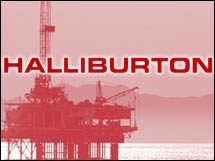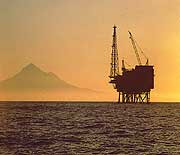
Dr. Hazen is a research scientist at the Carnegie Institution of Washington's Geophysical Laboratory and Clarence Robinson Professor of Earth Science at George Mason University: Bob Hazen: The Trumpeter Of Astrobiology.
Suzan Mazur: Are you looking at abiotic oil at all?Unresolved issue? Um, not really: Dismissal of the Claims of a Biological Connection for Natural Petroleum.
Robert Hazen: That is a very different subject, and there are many resources. There is a new book on oil by Eric Roston. I just chaired a conference at the Carnegie Institution, called the deep carbon cycle. It's on the Carnegie web site. We had experts from all over the world. You can see most of the lectures, including lectures by Russian scientists who believe that petroleum is virtually all abiotic. And hear lectures by American petroleum geologists who think oil is virtually all biological. It’s still an unresolved issue.
Summary here.
Session four on deep abiotic synthesis of organic molecules (Thomas McCollom of the University of Colorado served as discussion leader) considered what is perhaps the most controversial aspect of the deep carbon story. Barbara Sherwood-Lollar (University of Toronto) provided an overview of the topic, and examined recent experiments that inform the ongoing abiotic-controversy. Andrew Steele (Carnegie Institution) described recent observations of abiogenic organic matter in Martian meteorites and Archean sediments, and presented new experimental data on a possible mantle synthesis mechanism. Vladimir Kutcherov (Stockholm University, Sweden) and Vitaly Flid (Moscow State Academy, Russia) presented experimental and field evidence for a significant abiotic contribution to petroleum and natural gas deposits, in the tradition of the Russian-Ukrainian school of petroleum formation.





































